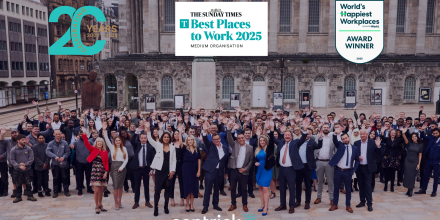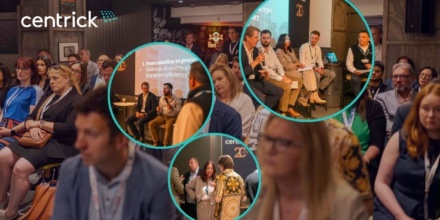On 25 September 2024, Centrick hosted a thought-provoking roundtable discussion on a critical issue facing the living sector: building safety and specifically the impact of building safety on BTR. Moderated by Brendan Geraghty, CEO of the Association for Rental Living, the session brought together leading voices from across the property sector to explore the complexities of building safety regulations and their implications for BTR developments.
Carina Ackrill, Founder of Centrick, opened the event by welcoming attendees and emphasising the importance of collaboration and knowledge sharing as the BTR sector navigates these evolving challenges. Following this, Brendan provided the context for the conversation, highlighting the unique operational nature of BTR. He stressed the sector’s responsibility to ensure ongoing safety and compliance – not just because regulations demand it, but because providing a safe and secure environment for our residents is fundamental to the operating a successful BTR scheme.
Building Safety Act: Early Days, Big Impact
Brendan’s introduction centred on the Building Safety Act (BSA) and its emerging role in shaping the future of BTR. He noted that while the sector is taking these new regulations seriously, the landscape remains relatively uncharted. The Regulator is still finding its feet, and as such, there’s a collective industry responsibility to not only get it right now, but to ensure that buildings remain compliant in the years ahead. As there are over 140,000 BTR homes under construction or in planning UK wide with over 11,000 in the pipeline in Birmingham alone, these insights could not be more relevant.
Event gallery
Design and Delivery: The Architect’s Perspective
Rav Kumar, Director and Principal Designer of the Birmingham studio at Corstorphine & Wright, brought an architect’s lens to the discussion, highlighting how building safety has become a central focus over the last 8-9 months. One of the key challenges he flagged was the issue of responsibility – ensuring that clients understand their role in maintaining safety standards throughout a building’s lifecycle. Rav also touched on the complexities of compliance, particularly in the early design stages, where significant fees are incurred just to meet Gateway 2 requirements.
Anders Jones, Partner at Thornton Firkin, expanded on this by discussing the on-site implications of these regulations. Upfront design input is more rigorous than ever, but while this reduces risk, it can drive up both costs and timelines.
Financing BTR in a Post-BSA World
Tirath Singh, Senior Relationship Manager from Shawbrook Bank, explored the financial side of the conversation, discussing how building safety regulations are impacting project viability. Increased material and labour costs, combined with the need to ensure compliance, are placing upward pressure on financing. Tirath explained that ongoing upskilling is essential to navigating these challenges and ensuring that projects remain future-proofed.
Shaun Grainger, Business Development Manager at Gallagher Insurance, added an insurance perspective, noting that the sector has seen a monumental shift following the Grenfell tragedy. Where safety was once almost an afterthought, insurers are now involved from the outset, ensuring that risks are properly managed. While this adds complexity, it also ensures that BTR assets are adequately insured and, therefore, better protected in the long term.
Operational Safety: The Centrick Approach
Build to Rent Director at Centrick, Clare Johnson, brought the conversation to the operational side of BTR. Clare highlighted how early engagement with design and planning teams helps ensure that buildings can be operated both efficiently and safely. She highlighted Centrick’s focus on reducing risk through timely recruitment and training – Centrick’s in-house Academy that staff are equipped with the knowledge they need to manage safety and compliance across the portfolio.
Operational efficiency is a cornerstone of BTR, and Clare stressed the importance of embedding this into the design and planning process to create long-term value for investors and residents alike.
Engaging Residents and Looking to the Future
As the discussion turned to resident engagement, it became apparent that the BTR sector holds a distinct advantage over others. Connor Scherer, Associate Director for Building Safety & Compliance at Centrick, highlighted that Centrick’s in-house Safety Case service for BTRs, RMCs, and freeholders allows for a more cost-effective approach. This service is customised to align with operational procedures and actively promotes resident involvement.
BTR represents the optimal model for ensuring compliance while building and maintaining strong relationships with residents. Prioritising safety communication has led to notable engagement within BTR communities. This emphasis on enhancing the resident experience is vital; after all, ensuring safety goes beyond mere compliance—it’s about cultivating environments where individuals feel secure and valued.
The session concluded with a discussion on the future of building safety in BTR. Brendan underscored that while the journey is far from over, collaboration across the sector will be key. Building safety is more than just a regulatory requirement; it’s a cultural shift that requires the industry to work together to ensure that our buildings remain safe, sustainable, which leads to operational efficiency.
Talk to Centrick
If you have any questions or would like to discuss how building safety impacts your BTR projects, our team of experts is here to help. Get in touch with Centrick’s BTR specialists to find out how we can support you in navigating these evolving challenges.









